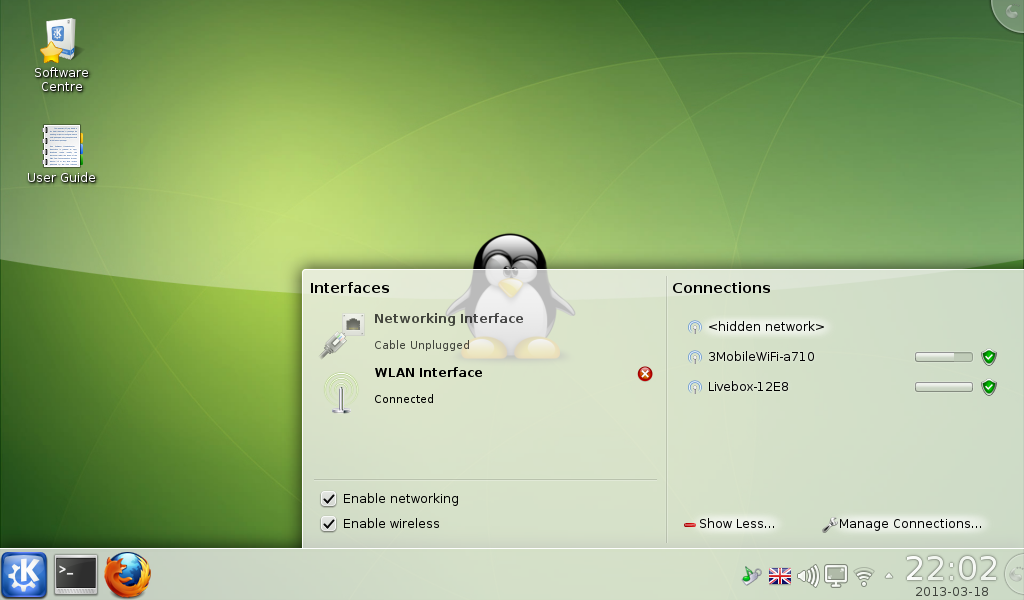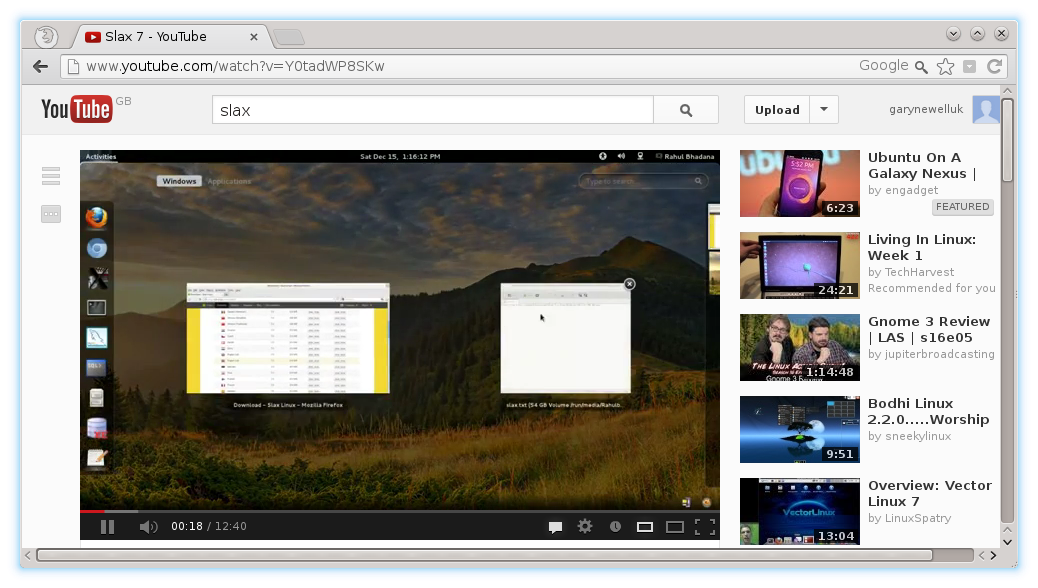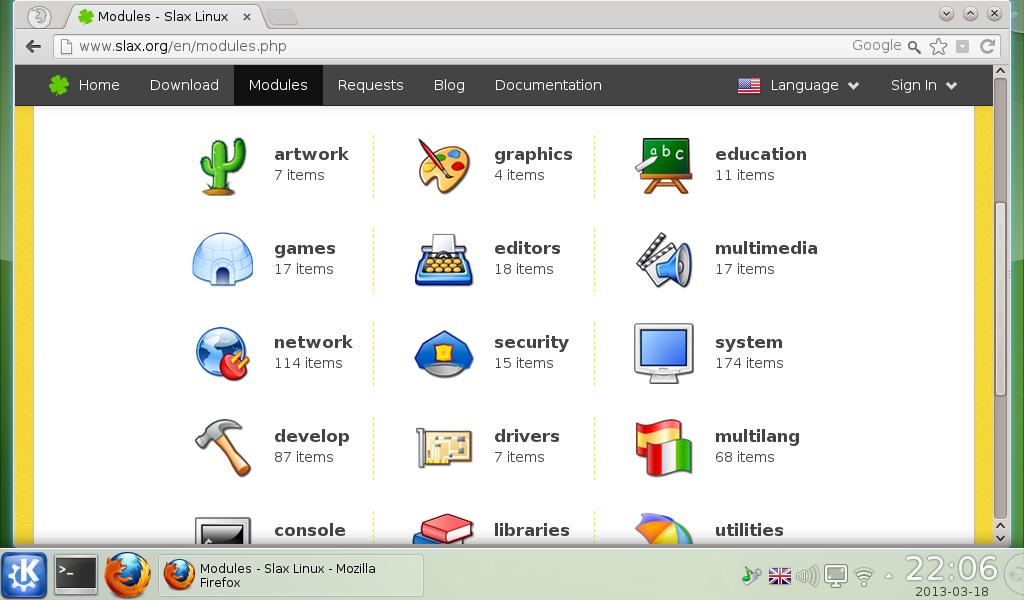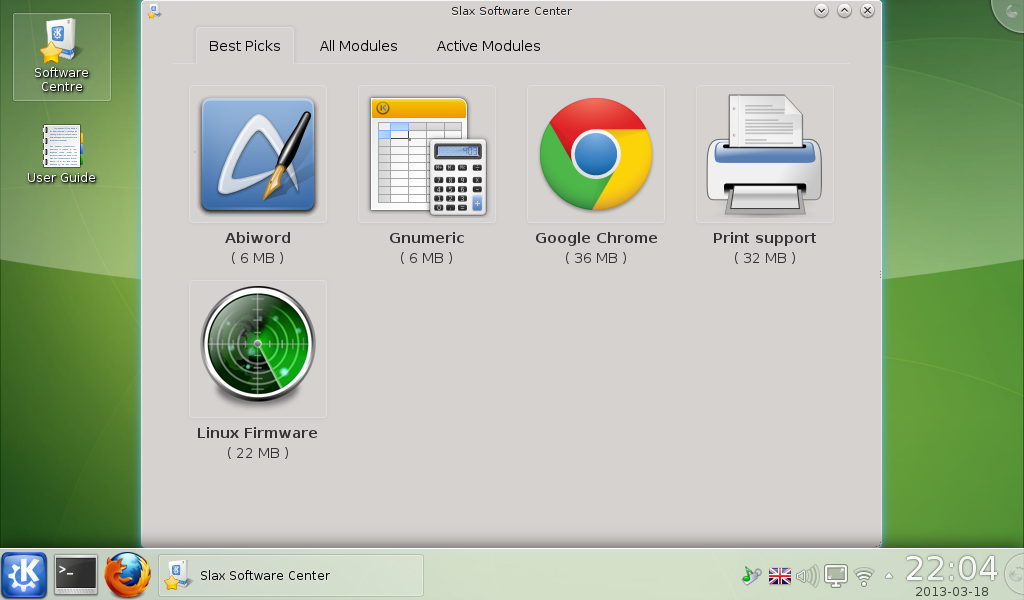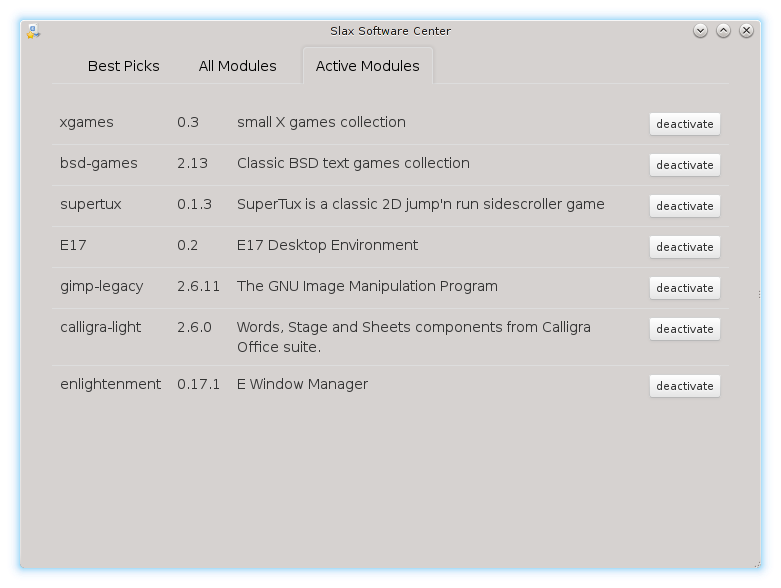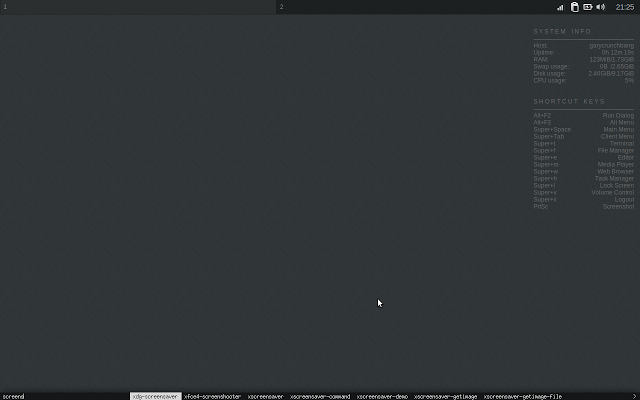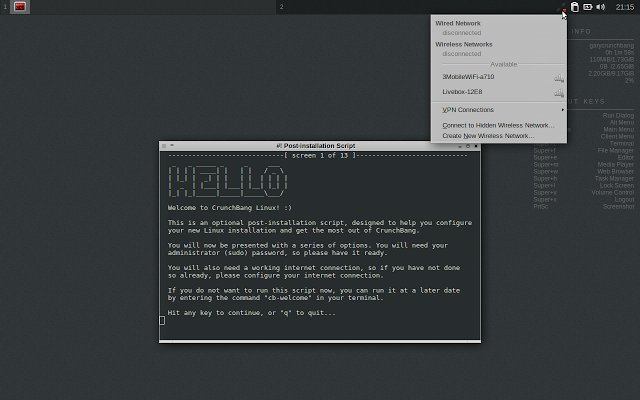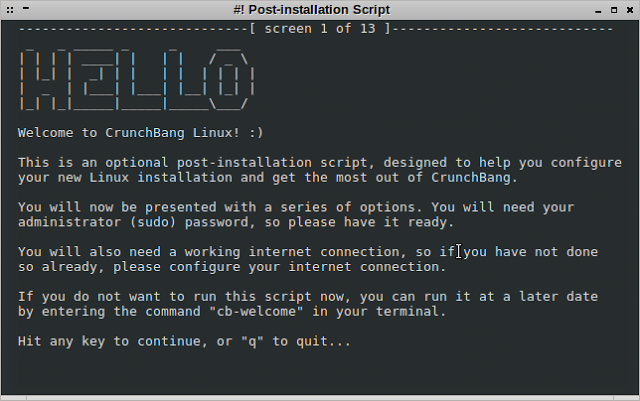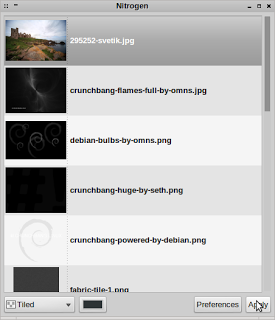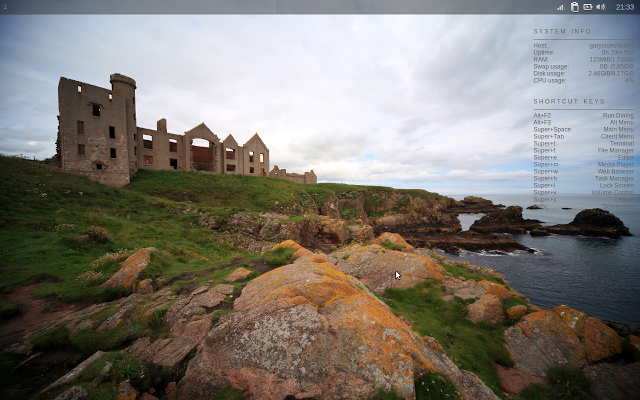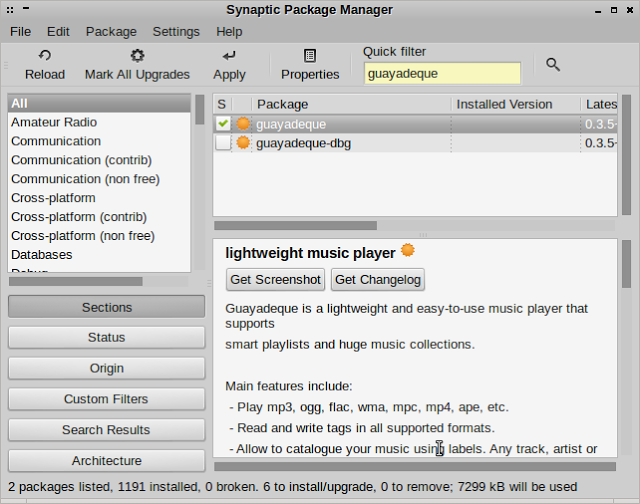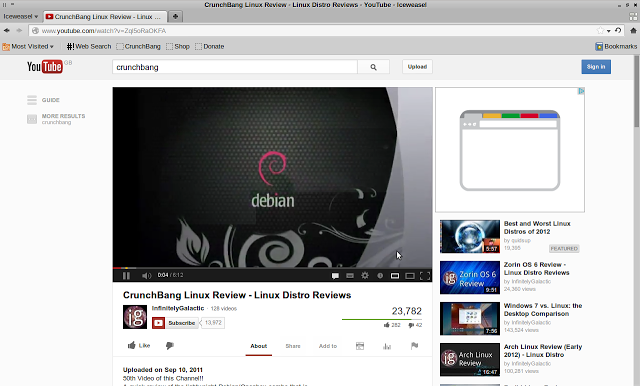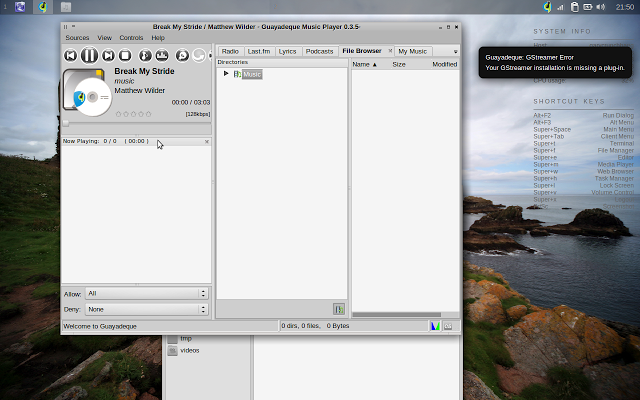Thursday, 28 March 2013
Introduction
Powering the Raspberry PI from a standard mobile phone charger
Power the Raspberry PI from the television
Power the Raspberry PI from a powered USB hub
Battery powered Raspberry PI
Solar powered Raspberry PI
Summary
Power to the Raspberry PI
4 comments:
Feel free to comment on any of the blog posts. Please try to be constructive.
Offensive messages will be removed as will blatant adverts for misleading products and sites.
Thanks for visiting my blog
Wednesday, 27 March 2013
Introduction
The Plan
Let the games begin
Preparation
Installation
Adding a User
Sound
GUI
Display Manager
Desktop Environment
Bing Bang Bosh......
Summary
Was it worth the effort?
First steps in Arch Linux
Introduction
The Plan
Let the games begin
Preparation
Installation
Adding a User
Sound
GUI
Display Manager
Desktop Environment
Bing Bang Bosh......
Summary
Was it worth the effort?
9 comments:
Feel free to comment on any of the blog posts. Please try to be constructive.
Offensive messages will be removed as will blatant adverts for misleading products and sites.
Thanks for visiting my blog
Tuesday, 19 March 2013
I have written reviews and how to guides on a number of different subjects ranging from "Connecting to the Raspberry PI using a Nexus 7" to "Customising the Xubuntu desktop".
Some of the articles are very well received and some of them blow around like carrier bags in the wind.
If you have an article that you want to write about Linux to promote your own site or you just want to try your hand at writing without the commitment of starting your own blog why not write an article for the Everyday Linux User blog.
If you are interested email everydaylinuxuser@gmail.com.
Everyday Linux User now accepting guest posts
I have written reviews and how to guides on a number of different subjects ranging from "Connecting to the Raspberry PI using a Nexus 7" to "Customising the Xubuntu desktop".
Some of the articles are very well received and some of them blow around like carrier bags in the wind.
If you have an article that you want to write about Linux to promote your own site or you just want to try your hand at writing without the commitment of starting your own blog why not write an article for the Everyday Linux User blog.
If you are interested email everydaylinuxuser@gmail.com.
0 comments:
Feel free to comment on any of the blog posts. Please try to be constructive.
Offensive messages will be removed as will blatant adverts for misleading products and sites.
Thanks for visiting my blog
- Linux
- Linuxnoobs
- Linuxquestions
- Raspberry_PI
- RaspberryPI
- Distrohopping
Everyday Linux User now on Reddit
- Linux
- Linuxnoobs
- Linuxquestions
- Raspberry_PI
- RaspberryPI
- Distrohopping
0 comments:
Feel free to comment on any of the blog posts. Please try to be constructive.
Offensive messages will be removed as will blatant adverts for misleading products and sites.
Thanks for visiting my blog
Monday, 18 March 2013
Introduction
If you go to distrowatch.com and look down the rankings you will see at number 24 a distribution called SLAX.It is very hard for distro developers to make their particular distribution stand out. SLAX is not one of them.
SLAX weighs in at 210mb and is built to run from a USB drive as opposed to being installed to the hard drive. What you end up with is a fully functional portable operating system.
Installation
To download SLAX go to http://www.slax.org/en/download.php and click on the 32-bit or 64-bit zip file for your particular language.Now ordinarily when downloading Linux distributions you would download the ISO image and burn it to the USB drive using something like UNetbootin but to install SLAX all you need is a USB drive, the zip file and a program that can extract the zip file to the USB drive.
Once the USB drive has all the files extracted to it you just need to run the bootinst.bat file located in the /slax/boot folder.
You do not need to install SLAX to a hard drive because it is built to run from the USB drive.
First Impressions
The first boot is a little longer than subsequent boots but it isn't that long even on an Acer Aspire One D255 netbook.
As you can see you are greeted with a rather nice green KDE screen with a toolbar at the bottom.
In the bottom left there are three icons which from left to right when clicked, shows the menu, opens a terminal window and starts the Firefox web browser.
In the bottom right there are icons for keyboard layout, audio, display settings, network settings and a clock.
Next to the clock is a little hotspot that when clicked enables you to change the panel settings and add further widgets.
On the desktop itself there are two icons. The first one is a link to the SLAX software repository which I will explain further later and underneath that icon is a help guide which is definitely worth reading as it explains a lot.
In the top right corner is another hotspot which when clicked enables you to log out and change KDE settings.
Connecting to the internet
I had issues when I first tried to connect to the internet. The problem is that this netbook contains an Intel Centrino Wireless-n 1000 card and this driver isn't installed by default.Now I could tell you the way I got around it which was to:
- download the driver iwlwifi-1000-5.ucode
- copy the driver to /lib/firmware
- open terminal and type: modprobe -r iwlwifi && modprobe iwlwifi
Later on I'll show you an easier way of making sure you have the correct wireless drivers installed.
Flash and MP3
Rather surprisingly Flash worked out of the box and just as surprisingly I was also able to play MP3 files using the media player (Juk) without having to install extra drivers or libraries.
Applications
SLAX is obviously a lightweight distribution because it is built to run from a USB drive and the applications reflect this.Games
- KBounce - Ball bouncing game
- Bovo - 5 in a row
- KPatience - Patience
- KSudoku - Sudoku
- KMines - Minesweeper
Graphics
- GWenview - Image Viewer
- KSnapshot - Screenshot
- Kolourpaint - Paint
- Okular - Document Viewer
- KColorChooser - Colour selection
Internet
- FireFox - Web Browser
- Pidgin - Messenger
- KRDC - Remote Desktop
- KPPP - Internet Dialup
- KRFB - Desktop Sharing
- KNetAttach - Network Folder Wizard
Multimedia
- SMPlayer - Media Player
- JUK - Audio Player
- KMix - Sound Mixer
Installing Applications.
SLAX doesn't use tools like Synaptic or YUM to install software. Software is installed as modules and can be downloaded from the SLAX website.
To install an application you download it from the website and place it in the /lib/modules folder.
By placing the module in the /lib/modules folder it is available for use everytime you run SLAX.
You can activate and deactivate modules by clicking on the software center icon on the desktop.
The software center has three tabs.
The first tab has the "best picks" from the module library and as you might expect contains applications such as Google Chrome.
The second tab is called "All Modules" and when clicked just shows the following message: "Here will be interface to browse all modules. Soon. Stay tuned! :)".
The third tab is called "Active Modules" and shows all the modules you have installed thus far.
You can choose to active or deactivate modules by clicking the button to the right of each application.
Remember earlier on when I showed the method for installing the wireless drivers? Well instead of doing that I could have gone to the module downloads page and from the drivers section installed the firmware-iwlwifi module.
And finally...
So everything thus far has been fairly standard except for the fact that it all runs as a live USB rather than installing it to a hard drive.But I found something odd whilst looking for further information on SLAX.
Visit http://old.slax.org/build.php.
You can build your own version of SLAX by adding the modules you want to add and removing the modules you don't need.
When you are happy with your selections you can just download the ISO and install it to a USB drive. There are hundreds of modules available. (Many more than from the main SLAX website).
The main issue I have with this is that it seems to be an old version of the SLAX website. Is this now obsolete or is this still active? If this is still active then do the modules for SLAX on this website work with the version of SLAX from the main website?
I love the idea of being able to build your own ISO. It is like Linux Lego. There is no link from the main SLAX website to the link above. I found the above link by searching for SLAX on Google.
Summary
This review is just a cursory glance at what I have learned so far about this operating system. I plan to spend quite a bit of time investigating it further.The operating system works straight away from a USB drive and is easy to create. The modules system also makes it easy to install software.
For those who like to play, the USB base makes SLAX a good sandbox for compiling other modules that don't appear in the module repository. It is a great way to learn how to compile applications without messing up your main distribution.
The portability of SLAX means you can take it anywhere and interchangeable modules means you can get the drivers working without too much fuss.
The main issues I have are as follows:
- I don't see the point in having a tab in the software center that says "will be implemented shortly". Just hide the tab until it is available.
- Why is there an old site and a new site? I think this is confusing. Should you use the modules from the old site?
- A lot of the modules on the old site are shown as "Not verified" and it isn't recommended that you use modules until they are verified. Will this ever happen now being that this is an old site?
Thankyou for reading.
Click here to download SLAX
Everyday Linux User Review of SLAX
Introduction
If you go to distrowatch.com and look down the rankings you will see at number 24 a distribution called SLAX.It is very hard for distro developers to make their particular distribution stand out. SLAX is not one of them.
SLAX weighs in at 210mb and is built to run from a USB drive as opposed to being installed to the hard drive. What you end up with is a fully functional portable operating system.
Installation
To download SLAX go to http://www.slax.org/en/download.php and click on the 32-bit or 64-bit zip file for your particular language.Now ordinarily when downloading Linux distributions you would download the ISO image and burn it to the USB drive using something like UNetbootin but to install SLAX all you need is a USB drive, the zip file and a program that can extract the zip file to the USB drive.
Once the USB drive has all the files extracted to it you just need to run the bootinst.bat file located in the /slax/boot folder.
You do not need to install SLAX to a hard drive because it is built to run from the USB drive.
First Impressions
The first boot is a little longer than subsequent boots but it isn't that long even on an Acer Aspire One D255 netbook.
As you can see you are greeted with a rather nice green KDE screen with a toolbar at the bottom.
In the bottom left there are three icons which from left to right when clicked, shows the menu, opens a terminal window and starts the Firefox web browser.
In the bottom right there are icons for keyboard layout, audio, display settings, network settings and a clock.
Next to the clock is a little hotspot that when clicked enables you to change the panel settings and add further widgets.
On the desktop itself there are two icons. The first one is a link to the SLAX software repository which I will explain further later and underneath that icon is a help guide which is definitely worth reading as it explains a lot.
In the top right corner is another hotspot which when clicked enables you to log out and change KDE settings.
Connecting to the internet
I had issues when I first tried to connect to the internet. The problem is that this netbook contains an Intel Centrino Wireless-n 1000 card and this driver isn't installed by default.Now I could tell you the way I got around it which was to:
- download the driver iwlwifi-1000-5.ucode
- copy the driver to /lib/firmware
- open terminal and type: modprobe -r iwlwifi && modprobe iwlwifi
Later on I'll show you an easier way of making sure you have the correct wireless drivers installed.
Flash and MP3
Rather surprisingly Flash worked out of the box and just as surprisingly I was also able to play MP3 files using the media player (Juk) without having to install extra drivers or libraries.
Applications
SLAX is obviously a lightweight distribution because it is built to run from a USB drive and the applications reflect this.Games
- KBounce - Ball bouncing game
- Bovo - 5 in a row
- KPatience - Patience
- KSudoku - Sudoku
- KMines - Minesweeper
Graphics
- GWenview - Image Viewer
- KSnapshot - Screenshot
- Kolourpaint - Paint
- Okular - Document Viewer
- KColorChooser - Colour selection
Internet
- FireFox - Web Browser
- Pidgin - Messenger
- KRDC - Remote Desktop
- KPPP - Internet Dialup
- KRFB - Desktop Sharing
- KNetAttach - Network Folder Wizard
Multimedia
- SMPlayer - Media Player
- JUK - Audio Player
- KMix - Sound Mixer
Installing Applications.
SLAX doesn't use tools like Synaptic or YUM to install software. Software is installed as modules and can be downloaded from the SLAX website.
To install an application you download it from the website and place it in the /lib/modules folder.
By placing the module in the /lib/modules folder it is available for use everytime you run SLAX.
You can activate and deactivate modules by clicking on the software center icon on the desktop.
The software center has three tabs.
The first tab has the "best picks" from the module library and as you might expect contains applications such as Google Chrome.
The second tab is called "All Modules" and when clicked just shows the following message: "Here will be interface to browse all modules. Soon. Stay tuned! :)".
The third tab is called "Active Modules" and shows all the modules you have installed thus far.
You can choose to active or deactivate modules by clicking the button to the right of each application.
Remember earlier on when I showed the method for installing the wireless drivers? Well instead of doing that I could have gone to the module downloads page and from the drivers section installed the firmware-iwlwifi module.
And finally...
So everything thus far has been fairly standard except for the fact that it all runs as a live USB rather than installing it to a hard drive.But I found something odd whilst looking for further information on SLAX.
Visit http://old.slax.org/build.php.
You can build your own version of SLAX by adding the modules you want to add and removing the modules you don't need.
When you are happy with your selections you can just download the ISO and install it to a USB drive. There are hundreds of modules available. (Many more than from the main SLAX website).
The main issue I have with this is that it seems to be an old version of the SLAX website. Is this now obsolete or is this still active? If this is still active then do the modules for SLAX on this website work with the version of SLAX from the main website?
I love the idea of being able to build your own ISO. It is like Linux Lego. There is no link from the main SLAX website to the link above. I found the above link by searching for SLAX on Google.
Summary
This review is just a cursory glance at what I have learned so far about this operating system. I plan to spend quite a bit of time investigating it further.The operating system works straight away from a USB drive and is easy to create. The modules system also makes it easy to install software.
For those who like to play, the USB base makes SLAX a good sandbox for compiling other modules that don't appear in the module repository. It is a great way to learn how to compile applications without messing up your main distribution.
The portability of SLAX means you can take it anywhere and interchangeable modules means you can get the drivers working without too much fuss.
The main issues I have are as follows:
- I don't see the point in having a tab in the software center that says "will be implemented shortly". Just hide the tab until it is available.
- Why is there an old site and a new site? I think this is confusing. Should you use the modules from the old site?
- A lot of the modules on the old site are shown as "Not verified" and it isn't recommended that you use modules until they are verified. Will this ever happen now being that this is an old site?
Thankyou for reading.
Click here to download SLAX
10 comments:
Feel free to comment on any of the blog posts. Please try to be constructive.
Offensive messages will be removed as will blatant adverts for misleading products and sites.
Thanks for visiting my blog
Wednesday, 13 March 2013
Introduction
1. Which Linux distribution should I choose?
2. Are you replacing Windows or installing alongside Windows?
- - Video player
3. Have you backed up?
"Create a recovery disk and a system image"What would happen if Windows suddenly stopped working because you accidentally deleted key files or you accidentally contracted some kind of nasty virus or malware?
You need a recovery disk and you need to create a system image. There are loads of guides for doing this online including:
- http://windows.microsoft.com/en-GB/windows7/products/features/backup-and-restore
- http://www.youtube.com/watch?v=rS616jQOURg
- http://howto.cnet.com/8301-11310_39-20091325-285/how-to-back-up-your-windows-7-computer/
4. Partitioning the hard drive
5. What is your motive for moving to Linux?
- You don't need Microsoft Windows
- You don't need Microsoft Office
- You don't need Outlook
- You don't need Internet Explorer
Summary
5 things to consider when installing Linux for the first time
Introduction
1. Which Linux distribution should I choose?
2. Are you replacing Windows or installing alongside Windows?
- - Video player
3. Have you backed up?
"Create a recovery disk and a system image"What would happen if Windows suddenly stopped working because you accidentally deleted key files or you accidentally contracted some kind of nasty virus or malware?
You need a recovery disk and you need to create a system image. There are loads of guides for doing this online including:
- http://windows.microsoft.com/en-GB/windows7/products/features/backup-and-restore
- http://www.youtube.com/watch?v=rS616jQOURg
- http://howto.cnet.com/8301-11310_39-20091325-285/how-to-back-up-your-windows-7-computer/
4. Partitioning the hard drive
5. What is your motive for moving to Linux?
- You don't need Microsoft Windows
- You don't need Microsoft Office
- You don't need Outlook
- You don't need Internet Explorer
Summary
4 comments:
Feel free to comment on any of the blog posts. Please try to be constructive.
Offensive messages will be removed as will blatant adverts for misleading products and sites.
Thanks for visiting my blog
Sunday, 3 March 2013
Introduction
Ok so I have put off doing this review for sometime. I tried Crunchbang for the first time about a year ago and I was a little underwhelmed.Actually to tell the truth at the time I was in a position where I had a number of versions of Linux I wanted to try out but I had suffered a hard drive failure and all the distros I had downloaded had been destroyed. I was left with a DVD wallet with old versions of Ubuntu and Mint and two USB drives with live installations available. (One contained Mageia and the other Crunchbang).
At the time I tried Crunchbang first and was immediately alarmed at the incredibly black screen and I switched straight away to Mageia. I used Mageia for about 2 weeks before I downloaded other distributions and started building up a new library. This all reminds me that I never did a review of Mageia either.
I have moved on a lot since those dark days and it is about time I gave Crunchbang the review it deserves.
Download and Installation
To download Crunchbang Linux visit http://crunchbang.org/.There are two versions of Crunchbang available:
- 32 bit
- 64 bit
I installed Crunchbang onto a USB drive using UNetbootin and rebooted the laptop. I was given a choice to start Crunchbang Linux in live mode or to install the software.
I chose to run the live mode first just to make sure there were no glaring problems that would prevent me using Crunchbang on this laptop and the live mode worked perfectly well.
I then looked for the install option from within the live mode but could not find it. I pulled up the alternative menu and typed install and there were various options available but none of them started an installer.
I therefore decided to reboot the computer and install using the "Install" menu option.
The Crunchbang install process was actually pretty good. I like an installer that runs in a clear linear fashion without jumping around.
You basically go through the usual steps of choosing a language, keyboard layout and timezone and you are also asked for a username and password so that you don't have to run Crunchbang as root.
Then comes the partitioning bit. If you are installing Crunchbang so that it overwrites everything on the disk then there is a simple install routine that enables you to do this. You can also choose to create a separate home partition and even separate usr, var and boot partitions.
If you are installing alongside Windows then you would need to know what you are doing with regards to partitioning beforehand. There is no simple Mint or Ubuntu install alongside Windows option.
First Impressions
The Crunchbang Linux screen loads with it's familiar black screen. At the top is a taskbar with icons in the top right for connecting to the internet, clipboard manager, battery monitor, audio settings and a clock.
A really useful feature of Crunchbang is the information on the right side of the screen.
There are two categories of information displayed. The first category is system information and this shows your computer name, uptime, ram, swap usage, disk usage and cpu usage. What is remarkable is how well Crunchbang Linux is performing. Memory usage is just 100 megabytes and of course there is no swap usage. The CPU is sitting at 1%. It is all very slick.
The second category is a list of shortcut keys that can be used. First of all there is the run dialog which can be called up by press Alt and F2.
There are shortcut keys for bringing up the main menu (super key and space) and then there are shortcut keys for bringing up the most commonly used programs such as super and w for bringing up a web browser and super and t for bringing up a terminal window.
Connecting to the internet
Crunchbang automatically detected the wireless card within the laptop and my wireless connections were made instantly available.
All I had to do was enter the security key and I was connected.
Post Installation Tasks
When you run Crunchbang Linux for the first time a terminal window is displayed with post installation instructions.
This is a really useful script that helps you install a few extras. There are 13 installation steps but some of the steps rely on you saying yes to certain options.
The sort of options available in the post installation script include updating the software repositories, updating the software packages, setting up printer support, installing java, installing LibreOffice and installing development tools.
Change the desktop wallpaper
The main thing that put me off Crunchbang when I first tried it last year and indeed this time is the ultra black wallpaper.Adjusting the wallpaper is simply a case of bringing up the main menu (right click on the desktop), choose settings and then change wallpaper.
Applications
Crunchbang Linux is a lightweight distribution and the applications installed by default match the lightweight ethos:Accessories
- Catfish - File search tool
- Archive - File compression
- Geany - Text editor
- Task Manager - Task Manager
- Terminator - Terminal
- Thunar - File Manager
Graphics
- GIMP - Graphics editor
- Viewnior - Image viewer
- Screenshot - Screengrabber
Multimedia
- VLC - Media player
- Volume control
- XFBurn - CD/DVD burner
Networks
- Iceweasel - Web Browser (+ installers for Chrome, Firefox and Opera)
- gFTP - FTP Client
- Transmission - Torrents
- XChat - IRC
- Gigolo - Remote Connections
- VNC Viewer - VNC Client (+ installer for VNC Server)
- SSH
- Installer for Dropbox
Office
- Link to Google Docs
- Abiword
- Gnumeric
- LibreOffice (You can install this from the first run wizard)
Other
- Synaptic - Package Manager
- GParted - Partition Editor
Installing Applications
If I am using a lightweight system then I like to use Guayadeque. Guayadeque has grown on me the more I use it. When I first started using it I really didn't like it all that much because it isn't immediately intuitive but when you get used to the way it works then it does really work.
Guayadeque isn't installed by default so I loaded Synaptic to install Guayadeque. Synaptic is easy to use. Just type the program name or a description of the program in the search box and a list of suitable applications is displayed.
Guayadeque is in the default repositories and therefore is displayed straight away. Simply mark the application and click apply to install.
Synaptic enables you to mark a number of applications and install them all at once and it finds all the dependencies that are required to make the applications run.
One thing that has to be mentioned is that installed applications do not instantly get added to the menu. You have to edit an XML file and then click the reconfigure Openbox menu item for the downloaded application to appear.
Flash and MP3
To test Flash I load up a browser and go to Youtube. The default browser in Crunchbang is Iceweasel. Iceweasel is a forked version of Firefox. You can install other browsers within Crunchbang by going to the Network menu and clicking the installer of the browser you prefer to use.Flash was installed correctly and I was able to watch videos straight away.
I tried to play a song within Guayadeque and instantly hit the Gstreamer error that is common across many distributions. (Missing plugin)
Summary
There are some distributions that have a lot of glitz and glamour and they lack functionality (if these distributions were people my nan would say they were "all skirt and no knickers"). There are other distributions that are built for do-ers. (and of course there are some that provide Glitz and glamour as well as functionality).Crunchbang is built for do-ers. The people that use Crunchbang are not bothered about gestures or flashy graphics.
Crunchbang is for people that have a purpose for their computer and the operating system is a tool to help them achieve that purpose. I would imagine that Crunchbang would be great for software development.
The performance of Crunchbang is absolutely brilliant. It is fast and sleek and uses very few of the system resources made available to it. If you have an older computer it is ideal.
I would suggest that Crunchbang is not for people new to Linux unless they are computer savvy to start with. If you have been using a Ubuntu type distribution for a few years and you have become competent enough to not need the pretty menus and graphics then Crunchbang will give you a lot of your computer's power back in your hands.
One thing I would change? the black wallpaper.
Thankyou for reading.
Click here to download Crunchbang #!
Everyday Linux User Review of Crunchbang Linux #!
Introduction
Ok so I have put off doing this review for sometime. I tried Crunchbang for the first time about a year ago and I was a little underwhelmed.Actually to tell the truth at the time I was in a position where I had a number of versions of Linux I wanted to try out but I had suffered a hard drive failure and all the distros I had downloaded had been destroyed. I was left with a DVD wallet with old versions of Ubuntu and Mint and two USB drives with live installations available. (One contained Mageia and the other Crunchbang).
At the time I tried Crunchbang first and was immediately alarmed at the incredibly black screen and I switched straight away to Mageia. I used Mageia for about 2 weeks before I downloaded other distributions and started building up a new library. This all reminds me that I never did a review of Mageia either.
I have moved on a lot since those dark days and it is about time I gave Crunchbang the review it deserves.
Download and Installation
To download Crunchbang Linux visit http://crunchbang.org/.There are two versions of Crunchbang available:
- 32 bit
- 64 bit
I installed Crunchbang onto a USB drive using UNetbootin and rebooted the laptop. I was given a choice to start Crunchbang Linux in live mode or to install the software.
I chose to run the live mode first just to make sure there were no glaring problems that would prevent me using Crunchbang on this laptop and the live mode worked perfectly well.
I then looked for the install option from within the live mode but could not find it. I pulled up the alternative menu and typed install and there were various options available but none of them started an installer.
I therefore decided to reboot the computer and install using the "Install" menu option.
The Crunchbang install process was actually pretty good. I like an installer that runs in a clear linear fashion without jumping around.
You basically go through the usual steps of choosing a language, keyboard layout and timezone and you are also asked for a username and password so that you don't have to run Crunchbang as root.
Then comes the partitioning bit. If you are installing Crunchbang so that it overwrites everything on the disk then there is a simple install routine that enables you to do this. You can also choose to create a separate home partition and even separate usr, var and boot partitions.
If you are installing alongside Windows then you would need to know what you are doing with regards to partitioning beforehand. There is no simple Mint or Ubuntu install alongside Windows option.
First Impressions
The Crunchbang Linux screen loads with it's familiar black screen. At the top is a taskbar with icons in the top right for connecting to the internet, clipboard manager, battery monitor, audio settings and a clock.
A really useful feature of Crunchbang is the information on the right side of the screen.
There are two categories of information displayed. The first category is system information and this shows your computer name, uptime, ram, swap usage, disk usage and cpu usage. What is remarkable is how well Crunchbang Linux is performing. Memory usage is just 100 megabytes and of course there is no swap usage. The CPU is sitting at 1%. It is all very slick.
The second category is a list of shortcut keys that can be used. First of all there is the run dialog which can be called up by press Alt and F2.
There are shortcut keys for bringing up the main menu (super key and space) and then there are shortcut keys for bringing up the most commonly used programs such as super and w for bringing up a web browser and super and t for bringing up a terminal window.
Connecting to the internet
Crunchbang automatically detected the wireless card within the laptop and my wireless connections were made instantly available.
All I had to do was enter the security key and I was connected.
Post Installation Tasks
When you run Crunchbang Linux for the first time a terminal window is displayed with post installation instructions.
This is a really useful script that helps you install a few extras. There are 13 installation steps but some of the steps rely on you saying yes to certain options.
The sort of options available in the post installation script include updating the software repositories, updating the software packages, setting up printer support, installing java, installing LibreOffice and installing development tools.
Change the desktop wallpaper
The main thing that put me off Crunchbang when I first tried it last year and indeed this time is the ultra black wallpaper.Adjusting the wallpaper is simply a case of bringing up the main menu (right click on the desktop), choose settings and then change wallpaper.
Applications
Crunchbang Linux is a lightweight distribution and the applications installed by default match the lightweight ethos:Accessories
- Catfish - File search tool
- Archive - File compression
- Geany - Text editor
- Task Manager - Task Manager
- Terminator - Terminal
- Thunar - File Manager
Graphics
- GIMP - Graphics editor
- Viewnior - Image viewer
- Screenshot - Screengrabber
Multimedia
- VLC - Media player
- Volume control
- XFBurn - CD/DVD burner
Networks
- Iceweasel - Web Browser (+ installers for Chrome, Firefox and Opera)
- gFTP - FTP Client
- Transmission - Torrents
- XChat - IRC
- Gigolo - Remote Connections
- VNC Viewer - VNC Client (+ installer for VNC Server)
- SSH
- Installer for Dropbox
Office
- Link to Google Docs
- Abiword
- Gnumeric
- LibreOffice (You can install this from the first run wizard)
Other
- Synaptic - Package Manager
- GParted - Partition Editor
Installing Applications
If I am using a lightweight system then I like to use Guayadeque. Guayadeque has grown on me the more I use it. When I first started using it I really didn't like it all that much because it isn't immediately intuitive but when you get used to the way it works then it does really work.
Guayadeque isn't installed by default so I loaded Synaptic to install Guayadeque. Synaptic is easy to use. Just type the program name or a description of the program in the search box and a list of suitable applications is displayed.
Guayadeque is in the default repositories and therefore is displayed straight away. Simply mark the application and click apply to install.
Synaptic enables you to mark a number of applications and install them all at once and it finds all the dependencies that are required to make the applications run.
One thing that has to be mentioned is that installed applications do not instantly get added to the menu. You have to edit an XML file and then click the reconfigure Openbox menu item for the downloaded application to appear.
Flash and MP3
To test Flash I load up a browser and go to Youtube. The default browser in Crunchbang is Iceweasel. Iceweasel is a forked version of Firefox. You can install other browsers within Crunchbang by going to the Network menu and clicking the installer of the browser you prefer to use.Flash was installed correctly and I was able to watch videos straight away.
I tried to play a song within Guayadeque and instantly hit the Gstreamer error that is common across many distributions. (Missing plugin)
Summary
There are some distributions that have a lot of glitz and glamour and they lack functionality (if these distributions were people my nan would say they were "all skirt and no knickers"). There are other distributions that are built for do-ers. (and of course there are some that provide Glitz and glamour as well as functionality).Crunchbang is built for do-ers. The people that use Crunchbang are not bothered about gestures or flashy graphics.
Crunchbang is for people that have a purpose for their computer and the operating system is a tool to help them achieve that purpose. I would imagine that Crunchbang would be great for software development.
The performance of Crunchbang is absolutely brilliant. It is fast and sleek and uses very few of the system resources made available to it. If you have an older computer it is ideal.
I would suggest that Crunchbang is not for people new to Linux unless they are computer savvy to start with. If you have been using a Ubuntu type distribution for a few years and you have become competent enough to not need the pretty menus and graphics then Crunchbang will give you a lot of your computer's power back in your hands.
One thing I would change? the black wallpaper.
Thankyou for reading.
Click here to download Crunchbang #!
13 comments:
Feel free to comment on any of the blog posts. Please try to be constructive.
Offensive messages will be removed as will blatant adverts for misleading products and sites.
Thanks for visiting my blog
|
|
|
|
-
Introduction Updated For Ubuntu 16.04 Windows 10 has been out for a while now and as I have a track record for writing dual boot guid...
-
Introduction By far the most read article on this site shows how to install Ubuntu alongside Windows 8 in 10 easy steps . Those ins...
-
Introduction Updated For Ubuntu 16.04 This tutorial shows you how to create a Ubuntu 16.04 USB drive using Windows 10 (although it wil...
-
Introduction Updated For Ubuntu 16.04 This is the 2nd guide showing how to dual boot Windows 10 and Ubuntu Linux. The reason there ...
-
Introduction This guide shows you how to create a bootable Linux Mint USB drive with persistence. Click here for an alternative guide...
- 4MLinux
- about.com
- Android
- antiX
- applications
- april fool
- Arch Linux
- backup
- beginners
- best linux
- BIOS
- blog
- blogging
- Bodhi
- book review
- bootable Linux USB drive
- Budgie Desktop Environment
- CentOS
- chakra
- Chakra Linux
- chromebook
- cloud
- competitions
- Crunchbang
- daap
- Debian
- desktop environments
- distro reviews
- docker
- dosbox
- dual boot
- dual boot linux
- ebooks
- editorial
- editorials
- Elementary OS
- Emmabuntus
- enlightenment
- events
- Fedora
- Fuduntu
- geeky gifts
- google nexus
- Guest Post
- handylinux
- hardware
- hardware review
- how to
- humour
- install guide
- interview
- interviews
- Knoppix
- korora
- kubuntu
- lenovo
- Lenovo Y700
- linux
- linux gifts
- Linux Glossary
- Linux Jargon
- linux joke
- Linux Lite
- linux mint
- linux news
- linux questions
- linux review
- Linux Reviews
- linux tutorials
- linux videos
- lubuntu
- Lucid Puppy
- lxle
- LXPup
- macbook
- MacPup
- Mageia
- makulu
- makulu linux
- Manjaro
- Manjaro Linux
- md5
- Mint
- Mozillux
- netbooks
- netrunner
- news
- opensuse
- opinion
- OS4
- PCLinuxOS
- Peppermint Linux
- playlinux
- playonlinux
- podcasts
- Point Linux
- polls
- Precise Puppy
- Puppy Arcade
- Puppy LINUX
- Q4OS
- Raspberry PI
- raspberry pi 2
- raspberry Pi model B
- raspberry pi zero
- raspbian
- Red Hat
- remove ubuntu
- retrogaming linux
- reviews
- roundup
- sha256
- shrink windows
- simplicity
- Slacko
- SLAX
- Snowlinux
- Solus
- SolusOS
- SolyDX
- sparkylinux
- SSD
- ssh
- steam
- sysadmins
- tutorials
- UBUNTU
- Ubuntu 15.10 review
- ubuntu 16.04
- ubuntu applications
- ubuntu chrome
- ubuntu convergence
- ubuntu dropbox
- ubuntu live
- ubuntu mate
- ubuntu phone
- ubuntu steam
- ubuntu usb
- UEFI
- UEFI settings
- usb drive
- validate ISO
- Videos
- web hosting
- which distro
- WIFI
- Windows
- windows 10
- Windows 10 and Ubuntu dual boot
- Windows Linux
- WINE
- world cup 2014
- xmas gifts
- XPQ4
- xubuntu
- Zorin


